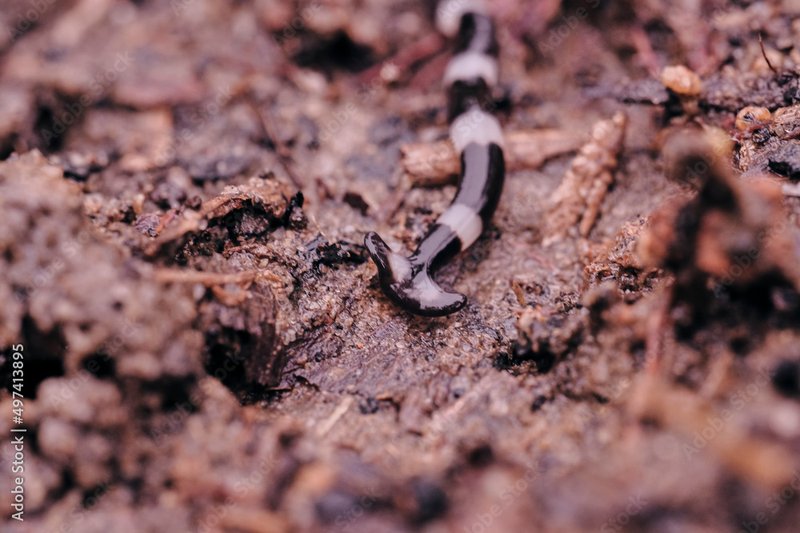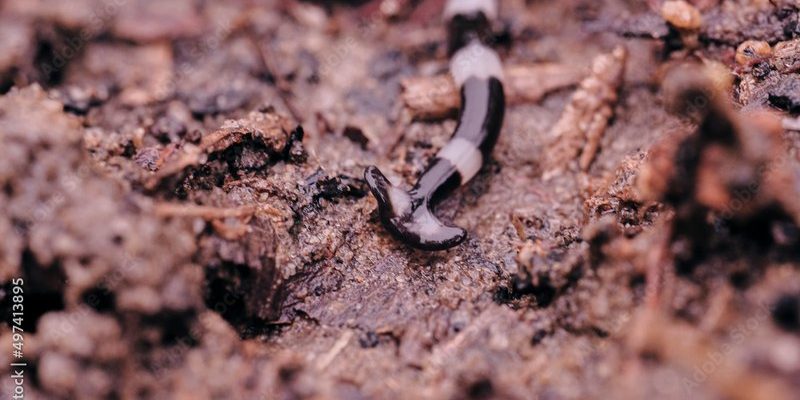
Imagine your backyard soil as a cozy neighborhood where plants, insects, and microorganisms live together in harmony. Now, picture the hammerhead worm as a new tenant that disrupts that peace. Originally from tropical regions, these worms have found their way to other parts of the world, often hitching rides in soil and mulch products. Why does this matter? Because they can disrupt local ecosystems, prey on beneficial earthworms, and impact plant health. Let’s dive deeper into how this happens and what you can do to keep your garden safe.
What Are Hammerhead Worms?
Hammerhead worms, scientifically known as *Bipalium spp.*, are a type of flatworm. They get their name from their distinctive, hammer-like head shape that resembles a flattened spatula. Typically, these worms can grow to be quite long, sometimes reaching lengths of up to 12 inches. Their bodies are often a dark brown or black color, which can make them blend in with soil, making them hard to spot.
One of the most interesting things about hammerhead worms is how they move. They glide along surfaces using a muscular contraction, which gives them a unique, almost slithering motion. Picture a snake gliding through grass—that’s how they travel! They are carnivorous and tend to feast on earthworms, which can be a problem for gardeners who rely on these beneficial worms to aerate and enrich the soil.
How Do Hammerhead Worms Spread?
You might be wondering, “How do these curious creatures make their way into my garden?” The answer often lies in the soil and mulch trade. When people purchase soil, mulch, or plant materials from different regions, they’re sometimes unknowingly bringing along hitchhikers like hammerhead worms. As soil and mulch are often moved across state lines, these worms can easily travel with them.
The spread of hammerhead worms is particularly concerning because they can thrive in various environments. They can adapt to different soil types and climates, which makes them difficult to control once they settle in. As a gardener or nature enthusiast, it’s essential to be aware of where you’re sourcing your gardening materials. Look for reputable suppliers who ensure their products are free of unwanted pests.
Identifying Hammerhead Worms
Identifying hammerhead worms can be a bit tricky since they blend into the soil so well. However, there are a few distinguishing characteristics to look out for. Their flat, elongated bodies make them easily recognizable, and the head shape is a telltale sign. You can also spot them by their movement, which looks more like a glide than a crawl.
If you do find one in your garden, it’s important to handle it carefully. These worms can produce a mild toxin that helps them defend against predators, so you don’t want to pick them up barehanded. Instead, if you need to remove them, using gloves or a shovel is a safer option. Honestly, it’s best to ensure your garden stays free of them right from the start.
Impact on Local Ecosystems
So, why should we care about hammerhead worms invading our gardens? For starters, they’re not just a nuisance; they can disrupt local ecosystems significantly. These worms feed on earthworms, which are vital for soil health. Earthworms aerate the soil and help break down organic material, making nutrients available for plants.
When hammerhead worms reduce earthworm populations, it can lead to poorer soil quality and, ultimately, less healthy plants. Imagine a community losing vital members; the entire ecosystem can start to crumble. If you’re dedicated to maintaining a thriving garden, understanding the impact of hammerhead worms is crucial for your gardening strategies.
Preventing Hammerhead Worm Infestation
Now that you know about hammerhead worms and their potential impact, let’s explore how to prevent them from taking over your garden. Here are some practical steps you can take:
- Buy Local: Whenever possible, source soil and mulch from local suppliers. This reduces the chance of introducing non-native species.
- Check Your Products: Before purchasing, inspect bags of mulch or soil for any visible worms or debris.
- Garden Hygiene: Keep your garden tidy by clearing up organic debris where these worms might hide.
- Educate Other Gardeners: Share knowledge about hammerhead worms with fellow gardening enthusiasts to prevent further spread.
By taking these steps, you can help ensure that your garden remains healthy and free of these unwelcome intruders.
What to Do If You Discover Hammerhead Worms
If you do find hammerhead worms in your garden, it’s important to act promptly. Removing them can help reduce their impact on your local ecosystem. Here’s what you can do:
1. **Identify:** Confirm that what you’re seeing is indeed a hammerhead worm. Refer back to the identification tips mentioned earlier.
2. **Remove:** Wearing gloves, use a shovel to scoop the worm and place it in a sealed container.
3. **Dispose:** Take the container out of your garden area and dispose of it safely. Do not compost them, as they might survive and spread.
4. **Monitor:** Keep an eye on your garden for any signs of their return. Regular checks can help catch any new arrivals early.
Acting quickly can make all the difference in keeping your garden healthy.
Hammerhead worms might seem like an oddity, but they’re a reminder of how interconnected our ecosystems are. By spreading through the soil and mulch trade, they can wreak havoc on local environments and the delicate balance that keeps our gardens thriving. Understanding what they are, how they spread, and how to prevent and manage their presence is crucial for anyone passionate about gardening.
Your garden should be a peaceful haven, not a battleground against unwelcome invaders. By staying informed and proactive, you help protect your green space and promote a healthier environment for all its inhabitants. So, keep a watchful eye, share your knowledge, and continue nurturing your plants with care!

